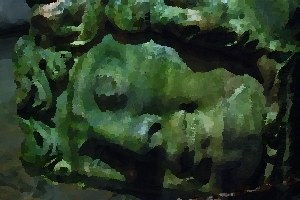The Basilica Cistern is a gigantic underground cistern built in ancient Constantinople, the old Byzantine Empire's capital. It is one of the most spectacular landmark still visible today in Istanbul.
It is located west of St. Sophia, between the Mesa in the south and the Theotokos Church of Chalkoprateia.
History
The cistern was built by Emperor Justinian in the basement of a large porticoed building, the Basilikè, after the latter's fire during the Nika sedition in 532. Prokopius of Caesarea describes at length in the Buildings the reconstruction of the Basilica and the reasons for the construction of this vast cistern:
'Digging deep into this square and one of the porticoes, the one facing south, the Emperor Justinian created a reservoir suitable for summer containing the overabundant waters of the other seasons'. (Buildings, I, xi, 14-16)
In this regard, Procope highlights the great seasonal variations in the aqueduct's flow, a feature that made it necessary to dig numerous underground cisterns in Constantinople to store water in the winter for the summer season.
Architecture
Rectangular in plan, the Basilica Tank measures 138 × 64.6 m, and its capacity is estimated at 78,000 m3, making it the largest tank of this type in Constantinople. Its outer wall is a 4 m thick brick masonry wall covered with a water-repellent coating. The interior space is subdivided by 12 rows of 28 marble columns for 336 columns. These columns, monolithic, are 8 m high - compared to 12.4 m in the Philoxenos cistern (Binbirdirek) - and support brick arches and vaults. Capitals of the Corinthian order surmount most, but there are also impost blocks. Two of them have a base made of a reused block with a carved Medusa's head (see photographs opposite). The intercolumns vary between 4.75 and 5.10 m.
 A lying Medusa head carving at the base of a column in the Basilica Cistern. [CC] credit.
A lying Medusa head carving at the base of a column in the Basilica Cistern. [CC] credit.Filming location
The Basilica Cistern was used as the setting for a scene in the film Good Kisses from Russia and Dan Brown's novel Inferno and its adaptation for the cinema.